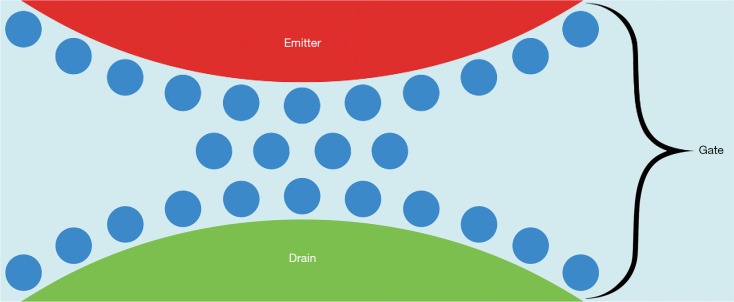Figure 2.
Principle of the biological field-effect transistor (FET): The tunneling of electrons (not shown in the image) across the gate comprising the nanoscopic interfacial water layer formed by three monolayers of H2O (blue), confined between the enzymes cytochrome c acting as emitter (red) and cytochrome c oxidase (COX) acting as drain (green), is controlled by R-NIR photons. The expectation that exposure of the enzyme complex to biostimulatory intensities of R-NIR light induces an instant drop in the viscosity of the nanoscopic interfacial water layer confined in the space between emitter and drain, complemented by a spatial separation (volume expansion) is based on the results described in (44,49), respectively. The working principle of the FET can be understood on the basis of Eq. [1] and [2]. Image inspired by (48).

